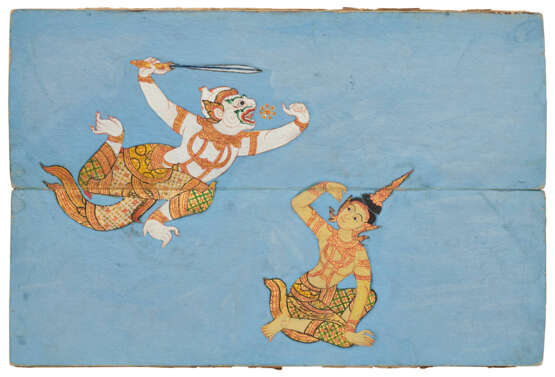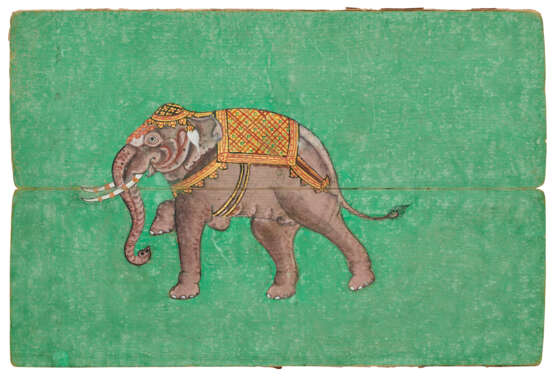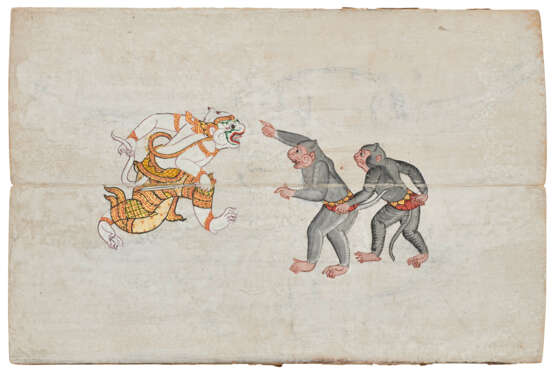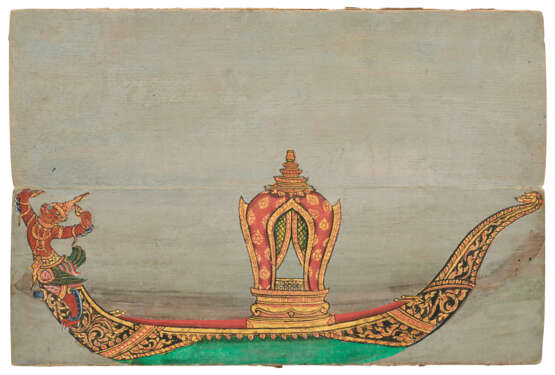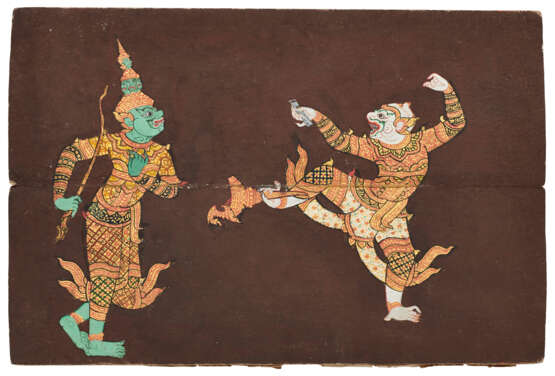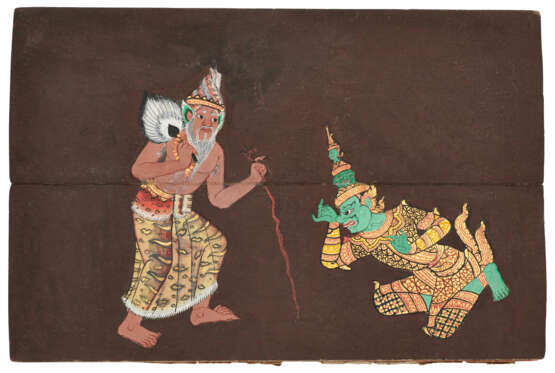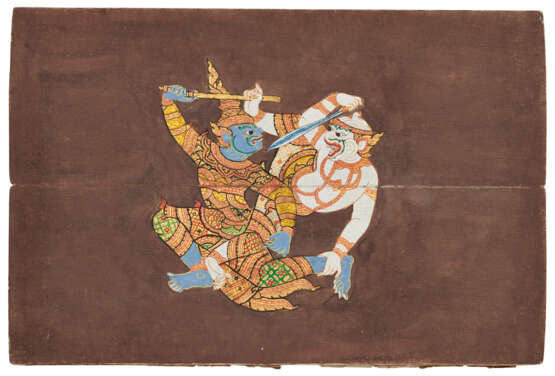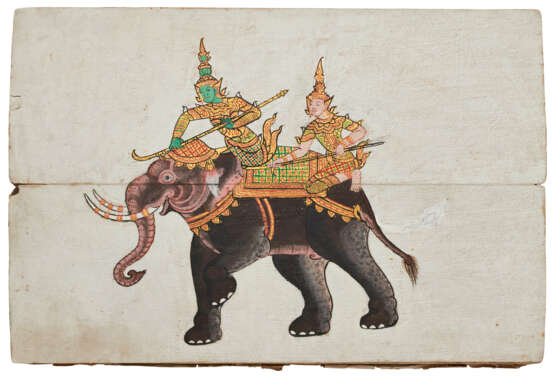ID 993362
Lot 64 | Anonymous Thai artist
Valeur estimée
£ 8 000 – 12 000
Scenes from the Ramakien, illustrated manuscript on paper [Thailand, late 19th century]
A highly decorative manuscript painted in the Kingdom of Siam, with richly-coloured illustrations of the Ramakien, one of the national epics of Thailand.
Two-sided horizontal concertina-folded manuscript, 360 x 120 x 50 mm (closed), 72 illustrations, each c.240 x c.360mm, painted on tree-bark paper (hinges of the concertina occasionally split at either end, the illustrations rubbed along the creases, scattered paint loss and rubbing throughout). Modern box.
Illustration:
The paintings relate to the Ramakien as it was staged in the Kingdom of Siam in the 19th and early 20th century, depicting the characters, their intricate costumes, and scenes from the play, alongside illustrations of the ornamental royal barges – many of whose figureheads represented characters from the same – which processed along the Chao Phraya River in an annual flotilla before the Grand Palace, residence of the Kings of Siam between 1782 and 1925. Scenes from the Ramakien are presented similarly in a 19th-century Thai manuscript held at the British Library, Or.14229.
Originally derived from the Sanskrit Ramayana, the Ramakien was the product of many centuries of revision and adaptation by Thai scholars, who transposed central elements of the Hindu epic into a Thai context: the clothes and weapons shown in the present manuscript, as well as the decoration of the royal barges, reflect an entirely distinct version of the legendary work as it came to exist in Thailand. The Ramakien was situated at the heart of national literary and dramatic culture: after large numbers of Thai manuscripts were lost in the destruction of Ayutthaya in 1767, the Siamese king Rama I oversaw between 1785 and 1807 the preparation of the text recognised today; his son, Rama II, subsequently rewrote parts of his father’s version for khon drama, a traditional, strictly-choreographed form of Thai dance.
Painted in rich colours, the present illustrations primarily depict characters from the Ramakien interacting with one another, in combat or otherwise; elephants, a horse (with rider) and an ox also appear. Six of the 72 paintings show barges with figureheads from the Ramakien or other ornamental vessels. This compilation may have been produced for visitors to the Kingdom of Siam, as a visual record of performances of the Ramakien before the Grand Palace or, perhaps, as a model book: either a guide for artists and dancers involved in khon or shadow-puppet performances, for the purpose of costume or puppet design, for the painting of the royal barges, or for temple painters reproducing scenes from the Ramakien in mural form.
Christie’s is grateful for the assistance of Dr Justin McDaniel in the identification of the present manuscript.
Special notice
No VAT is payable on the hammer price or the buyer's premium for this lot. Please see the VAT Symbols and Explanation section of the Conditions of Sale for further information
| Lieu d'origine: | Asie du Sud-Est, Asie, Thaïlande |
|---|---|
| Catégorie maison de vente aux enchères: | Manuscrits médiévaux et de la Renaissance |
| Lieu d'origine: | Asie du Sud-Est, Asie, Thaïlande |
|---|---|
| Catégorie maison de vente aux enchères: | Manuscrits médiévaux et de la Renaissance |
| Adresse de l'enchère |
CHRISTIE'S 8 King Street, St. James's SW1Y 6QT London Royaume-Uni | |
|---|---|---|
| Aperçu |
| |
| Téléphone | +44 (0)20 7839 9060 | |
| Commission | see on Website | |
| Conditions d'utilisation | Conditions d'utilisation |
